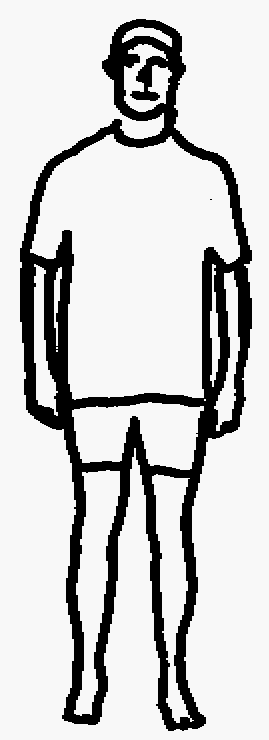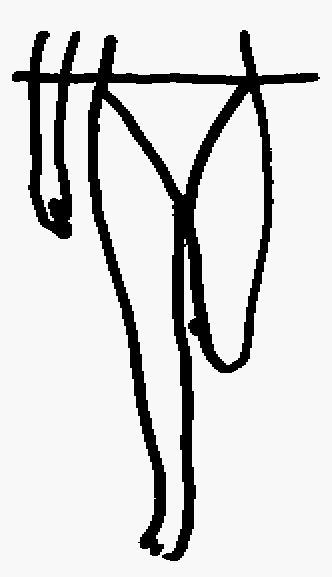|
|
|---|
One Legged Stance:- Start Position
Stand in front of the mirror for this one!
Once you have perfectd one legged stance on firm ground, try standing barefoot on
a cushion or foam squab - Makes for great ankle sprain prevention.
- Stand relaxed
- Inside of feet parallel and a few inches apart, arches formed, knees just slightly bent.
- Pelvis in neutral with the tail bone lengthening away.
- Long spine.
- Anchored scapulas.
- Back of neck long, and chin gently tucked.
One Legged Stance:- Action
- Breathe in, and zip and hollow.
- (Breathing out and keeping the pelvis completely level): Tighten your right buttock,
transfer your weight to your right leg, and lift your left leg off the floor.
- (Standing on right leg): Breathe normally for a few breaths:
concentrate on a level pelvis, long upright back, clenched buttock, outward looking knee
& formed foot arch.
- Breathe in.
- (Breathing out): return your leg to the floor.
- Repeat three to five times each side.
© Bruce Thomson, EasyVigour Project
(Scroll right>>>>....)
|
One Legged Stance:
|
Start Position
(Standing Correctly):

|
Action
(Note level pelvis):

|
Comments
- (Lop Sidedness): If you have a painful spot on one side of your body (e.g. to the side of your spine,
or in one buttock, or one hamstring, or one foot), that is pretty good evidence that
you have a significant imbalance between your right and left sides. That shouldn't be surprising,
because most human beings have a right or left dominant side. If you observe
yourself during this and similar exercises you will begin to appreciate that what
feels "all square" is actually lop sided, and (what is more), you begin to have
the chance to do something about it!
|
What it does
Single legged stance is something we perform all the time when walking or running:-
- This exercise gives us the opportunity to observe ourselves doing this uniquely
human movement pattern. We can observe what we are doing wrong and work on improving it!
- At the same time, we can practice a basic movement pattern which modern western man
has all but forgotten: That of forming the foot arch and clenching the buttock at
the moment of foot fall(3).
Watch Points
- Hip level, and long waist on both sides.
- Always keep the foot arch formed and the buttock clenched.
- Do not let the knee collapse inward.
Reference
- Shirley A Sahrmann: Diagnosis and Treatment of Movement Impairment Syndromes;
Publ. Mosby 2002
- The Official Body Control Pilates Manual Available from: http://www.bodycontrol.co.uk/
- Bruce Thomson: Engage Gluteus maximus!
scroll up^^^^.....
|

